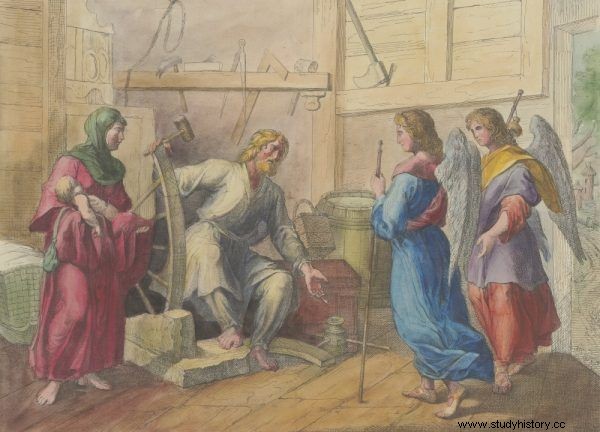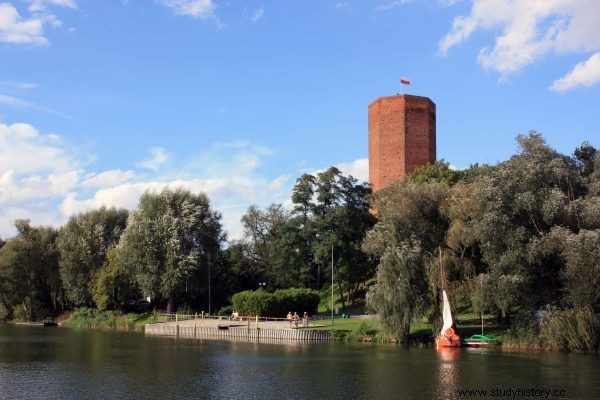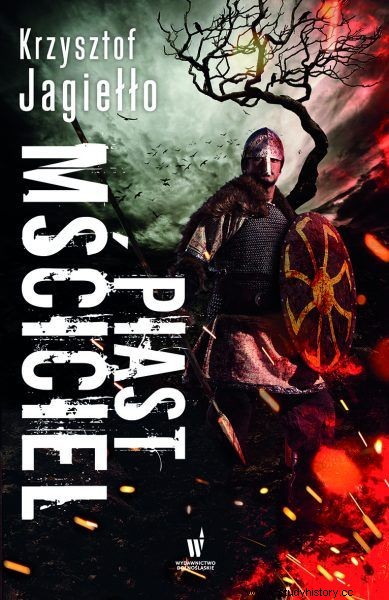Every Polish child knows the story about the predecessor of Piast's son, Siemowit, the wicked Prince of Popiel, who died in agony, devoured by mice for his numerous crimes. But where exactly did this legend come from? And is there any truth to it?
“There was no noble virtue in him, no deed worthy of a heroic husband and prince, no evidence of virtue, no love of honor; he indulged in idleness, drunkenness and gluttony (...), devoted to talks in the company of women, as if escaping the plague and defeat from mature and wise husbands "- begins the story of Popiel Jan Długosz.
The history of the prince - more or less elaborate and transformed - appears in many tales of medieval chroniclers. Gall Anonym was the first to include the story of the pre-Piast ruler in his chronicle. It occurs under the name Pąpiel (Pumpil) or Popiel (Popel). Wincenty Kadłubek romanized them, calling the legendary predecessor of the Piasts Pompilius.
The chroniclers also mention his nickname - Chwościsko or Chościsko (meaning a tail or… a worn broom). He is said to have deserved such a nickname with his appearance and behavior. As Długosz writes:" He was disgusting with his ugly and sparse and worn hair on his head and more repulsive because of debauchery and low morals. ”

According to legend, the mice caught Popiel and his family in a tower on a mysterious island in the middle of a lake.
A disgraceful death
From the beginning, Gall presents the prince in a negative light, foreshadowing the imminent end of his reign. An incident during the haircut of the ruler's sons was to herald the fall. Popiel then chased away "two guests" who had come by the will of God himself. Instead, they were invited to be hosted by a poor plowman, Piast, who was holding the same ceremony.
A surprising event took place during the game. As reported by Polish Chronicle :"And so still [at Piast - ed. ed.] beer was supposed to arrive until all the borrowed vessels were filled with it, and those who feasted at the prince's house found [their vessels] empty ", which, according to Gall Anonymus, was a prediction of Popiel's overthrow and the takeover of power by Piast's son Siemowit . The chronicler also briefly described the death of the legendary prince, which was to take place outside the Polish territory:
The Ash banished from the kingdom suffered so much from mice that he was transported through his surroundings to an island where he was defended against these enraged animals for so long in a wooden tower that flowed there until abandoned by everyone to the killer stench [rising from] a multitude of beaten [mice], he died the most disgraceful death because he was bitten by [those] monsters.
While in Gallus we do not find out where these mice hatched from, we find the answer to this question in later chroniclers. Wincenty Kadłubek and Jan Długosz passed the extended version of the story about Popiel to their descendants.
Where did mice come from?
According to them, his wife was also responsible for the ruler's wickedness. Namely, she was to persuade her husband to murder his uncles. On her advice, Popiel began to simulate a serious illness, thus luring relatives to Gniezno. He ordered to arrange a funeral for himself, during which he suggested drinking the goblet together.
The golden goblet contained a poison-flavored drink. Tradition dictated that the ruler should taste it first. Popiel only pretended to try the "delicious" drink, and then passed the cup on. After kissing the prince, the guests drank poison. Długosz reported what happened next:
The guts of the poisoned poison began to be devoured by the poison, killing innocent husbands who suddenly became feverish and insane, when many thought they were drunk and others [and] passed them sick and the insane. Finally, when he reached the depths and the very seat of the soul, before the night came, all who drank this drink died in terrible torments and the bursting of the bodies, though dead, showed conclusively that the poisoned had died.
Popiel also forbade the burying of his relatives, which turned out to be disastrous for him. From decaying bodies, swarms of mice emerged and began to pursue the cruel tyrant. The fires, which were supposed to be a barrier for rodents, did not help. The escape to a wooden tower on an island surrounded by the waters of the lake did not help either.

The fall of Popiel was heralded by an incident during the haircut, when he did not let in two guests sent from heaven. Eventually, they found hospitality at Piast the plowman.
Długosz described in detail the circumstances of the death of the prince and his family:"Two of his sons, first in front of the unfortunate and unable to help mother, then the cruelest wife, and finally the tyrant [Pompilius] devoured and torn and bit all members that there was no trace of the bone left or meat. ”
From German soil to Poland
There are many hypotheses about the origins of the story of Popiel and the mice. According to Aleksander Brückner and Martin Beheim-Schwarzbach, the Polish version of the "mouse legend" was borrowed from Germany. The latter concluded that the gruesome application from the Rhineland was brought to the Vistula by the Cistercians. In turn, according to Marian Zygmunt Jedlicki, the surroundings of Rycheza, the German wife of Mieszko II, or the clergy from Leodium may have contributed to the spread of the story.
Henryk Łowmiański also insists on the Rhenish genesis of the legend. According to him, it was in that area that reports of bloodthirsty rodents were threatened, and the wedding of Mieszko II with the daughter of a Rhenish palatine fell on the same period as enrollment in Annales Quedlinburgenses one of the oldest mouse legends.
In addition, near Ostrów Lednicki, where the palatium of the young couple was to be built, there was the village of Myszki . As Łowmiański claims:"This name gives a new clue as to where the German legend was linked with the Polish environment and where to look for the wooden tower where Popiel died."

The Mouse Tower from Kruszwica with the legendary building only has a name in common. It was built in the times of Casimir the Great.
The German origin of the legend is questioned by Jerzy Banaszkiewicz. He believes that it is rather an Indo-European spiritual legacy, which the Slavs adapted to their culture. In his deliberations on this subject, he emphasizes:“In the early Polish Middle Ages, its applications and the mechanism organizing the content of the story were still understood. Over time, the application becomes fictionalized and limits its meanings to the Christian moral: "do not be cruel to your neighbor" ”.
The legend of the fall of the evil prince may also be directly related to the native founding myth of the Piast dynasty. The tyrant's initial failure to receive the enigmatic guests bodes the end of his reign.
In the story presented by Gallus Anonymus, one can see a reversal of roles between Piast and Popiel on the example of food - in the end, it is the supreme authority who is able to feed the community. Moreover, as Banaszkiewicz writes:
By attaching, sometime in the 11th century, an application about mice devouring the prince to a lecture explaining the conquest of the throne by the Piast dynasty, wanted to show the unquestionable path of the new line to power superior . With the help of the plot about the Popiel eaten by mice, a deliberate juxtaposition was made:a tyrant, a king bad for the country - a "happy" representative of the Piast family, ensuring prosperity to his subjects.
The old prince is killed by the plague of mice, and Piast introduces his son to the Polish throne and introduces himself to the future subject of the new dynasty as a hero of abundance and abundance of food .

This article was inspired by Krzysztof Jagiełło's novel "Piast Mściciel", which was published by Wydawnictwo Dolnośląskie.
What about the Mouse Tower?
So did the mysterious tower where Popiel was supposed to hide from little persecutors even existed? Gall Anonim mentions a wooden structure on the island without specifying a specific location. Popiel allegedly found shelter there after he was expelled from Gniezno.
Attempts to locate this object were made, among others, by the author of Kronika Wielkopolska . He located the tower in the town of Kruszwica. The island on the local lake is also reported by Polish-Silesian Chronicle and Chronicle of Polish Princes .
But although medieval historians tried to link the tyrant's death with this place, it should not be associated with the macabre legend of today's Mouse Tower. It is a fragment of the 14th-century castle, erected by order of Casimir the Great on the site of the former stronghold from 976. The tower was baptized as Mysia only in the era of Romanticism.
Inspiration:
This article was inspired by Krzysztof Jagiełło's novel "Piast Mściciel", published by Wydawnictwo Dolnośląskie, presenting a fascinating vision of the early beginnings of the Polish state.
